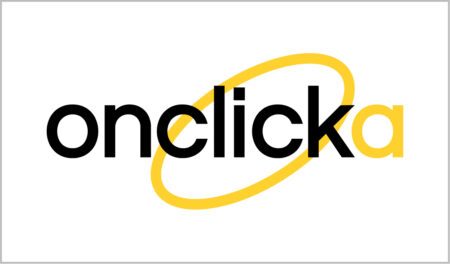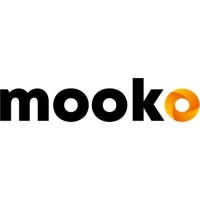Today, app and mobile advertising companies present the bulk of the digital advertising market. The nature of mobile calls for a personalized approach, precisely targeting advertising campaigns for the best return on investment. A number of top mobile advertising companies support this trend.
In 2021, mobile advertising spending reached $288 billion worldwide, with an increase of 26.6% from the previous year. With the world of programmatic advertising evolving at a high speed, mobile advertising is an emerging concept that can help marketers successfully reach potential mobile customers.
In this guide, we will run through everything you need to know about mobile advertising, and how your business can benefit from app advertising. We will also present the top mobile advertising companies to create successful ad campaigns.
MyBid: Global Reach for Your Success
MyBid is a multi-format network covering 180 countries. Easy payment systems and high conversion rates.
Join nowWhat is mobile advertising?
First and foremost, we want to understand the true definition of the broad term that is mobile advertising, as it often serves as an umbrella term.
Mobile advertising is a type of advertising that is programmatic and that occurs on mobile devices, such as smartphones and tablets. It is defined as a subcategory of mobile marketing, taking form of text or SMS ads, or banner advertisements within mobile apps.
In essence, mobile advertising refers to really any kind of advertising that appears on mobile devices and websites, using wireless connections. These advertisements are designed based on consumer demographics, including their interests and demands as well as their browsing history.
Benefits of app advertising
The recent boost in mobile usage has created many opportunities for advertisers to place their ads on mobile websites as well as downloaded apps and games. This format of mobile ads can include Instagram story ads, image ads on Facebook and video ads on YouTube or in-between games.
This surge has also created many advantages when integrating mobile advertising. Marketers can benefit from new lead generations to customer retention through innovative mobile ad formats and strategies.
The main goal here is to trigger brand engagement from potential customers. Therefore, mobile ad companies can be very beneficial in reaching this objective.
Other benefits include the following:
- Cost-efficiency
- Geo targeting
- Performance tracking
- Personalized ads
- Creativity
- Interactivity
- Instant responses
- Higher conversion
Mobile advertising platforms – categories
Marketers can choose from a wide range of mobile advertising platforms to launch user-friendly mobile ads, increasing brand awareness and boosting revenue.
These mobile advertising platforms and categories are helpful in creating effective mobile advertising solutions. However, a solid strategy that suits your specific sector will determine the success of your campaign.
Nonetheless, let’s define the major platforms that are worth taking note of when partnering with top mobile ad networks:
Mobile ad network
It is an advertising company that serves as an intermediary between app developers that want to advertise their apps or online merchants, and publishers or companies that want to place ads within their apps or websites to make a profit.
Mobile ad server
It is a web server that stores mobile ads and provides technological solutions to manage and display these ads on various mobile apps and websites.
Mobile DSP (mobile demand-side platform)
It is a company that provides a system for mobile advertisers to buy mobile inventory from multiple ad exchanges, ad networks and mobile publishers. The mobile DSP key feature is a single interface for a real-time bidding to display online ads across multiple ad-exchanges.
Ad fraud detection tool
It is a company that provides a technical solution to advertisers to detect and prevent fraud in digital advertising campaigns.
Mobile ad analytics
It is a company that provides mobile ad campaign attribution and analytical tools.
Retargeting
It is an advertising company that provides services for re-engagement, with online audiences that, at some point, have seen or clicked on an ad but then didn’t engage further.
Social ads
It is a digital advertising company that provides unified solutions to run ad campaigns across multiple paid social ad platforms, such as Facebook ads, Twitter ads, Pinterest ads, TikTok ads and more.
SSP (supply-side platform)
It is a company that allows desktop or mobile app publishers to manage their ad inventory across multiple, both desktop and mobile, platforms.
Mobile advertising formats
Mobile ad formats are also important components of your campaign that you need to implement and select according to your business goals. There are a range of different types of mobile advertising formats, among which the major ones are:
Banner ad
It is a still or animated image that is usually placed on a website or within a mobile app.
Interstitial
It is a full-screen graphical ad that covers an entire website or mobile app interface. It requires action from a website visitor or an app user to either click-through or close the tab to continue interaction with the mobile app or website.
Offer-wall
It is a window in an app that offers mobile users rewards or different incentives in exchange for specific actions, like downloading an app or registering and more.
Video ad
It is a short, usually 15-30 second length video clip that advertises a specific mobile app or a website.
Native ad
It is a form of paid media where the ad experience mimics the natural form and function of the mobile app or website interface.
Social ad
It is an ad displayed on social media sites or via audience networks associated with them, for example, the Facebook audience network.
All mobile advertising formats are developed to advertise products, services and mobile apps in particular. You should consider these mobile advertising formats in order for your ads to reach a larger number of target mobile users.
Which mobile ad formats should I choose?
The toolbox of advertising formats that a mobile advertiser has consists of the following items: a banner ad (either static or animated), an interstitial banner (it occupies all mobile app interface real estate), video and native ad.
Among the above mentioned four, video and native formats are the current mobile advertising industry frontrunners.
Mobile users in general are shifting from watching videos on a desktop to mobile. That’s why short engaging video ads on smartphones and tablets are more likely to get a higher level of engagement and bring more money for mobile publishers.
By definition, a native ad format is the one that is least intrusive amongst all mobile ad formats available. It is designed to follow the natural form and function of the mobile user experience inside a mobile app or website.
Because it complements any content of a mobile app or website in which it is placed, it’s capable to generate higher engagement and lead to profitable action.
How does app advertising work?
There are several mobile advertising strategies to choose for your business. With modern technology advancing so quickly, more varieties of mobile ad formats and models are being created.
You also want to adapt your advertising campaign to your users’ habits to target the right ones, and eventually turn visitors into loyal customers.
With mobile apps becoming the prime method for users to interact with services and products, in-app advertising offers complex models to choose from.
Mobile advertising: business models
Let’s take a look at some of the popular models in mobile advertising:
CPC (cost-per-click)
It implies charging an advertiser for every click on a mobile ad inside an app or on a website.
CPM (cost-per-mile)
This model implies charging an advertiser for each 1,000 impressions of their mobile advertising.
Cost-per-install / pay-per-install / CPI
With this model, an advertiser is charged once their app is downloaded by a user.
CPA (cost-per-action)
This business model is based on charging advertisers once a specific action is taken within a mobile app or on a website.
The ultimate decision about what business model to choose should be made by each publisher and advertiser individually, after carefully examining ad networks they are considering to monetize their unique mobile or desktop inventory with.
Mobile advertising vs mobile marketing
Mobile marketing is an umbrella term that describes a multi-channel online marketing concept targeting an audience via their mobile devices. It refers to marketing activities, such as promotions sent through SMS text messages, downloaded apps and push notifications.
Now, this may sound just like mobile ads. But think of mobile advertising as a subcategory of mobile marketing – because it is.
Mobile marketing uses data, such as location, buyer persona as well as user preferences and habits to promote relevant ads to targeted users. Mobile advertising uses programmatic bidding on the other hand, involving advertisers in real-time bidding.
The app advertising process involves key players like DSPs, retargeting, SSPs, a mobile ad network and an ad exchange, which we have illustrated here:
App advertising process

This is why the above mentioned mobile advertising categories, models and formats play an important role in how mobile advertising works, and how it therefore differs from basic mobile marketing.
How does mobile advertising targeting work?
Targeting is a crucial part of any mobile ad campaign, having well written text or well designed graphic creatives is not enough to launch a successful advertising campaign. If your ad misses people that may find its message compelling to act on, you’re definitely wasting your advertising budget.
There are several parameters that influence what type of audience a mobile ad will reach. These metrics include:
- Demographics
- Geolocation
- Time of a day
- Device
- Operating systems
- Wifi / mobile connection
- Device and interests / habits
To define the best strategy for mobile ad campaign targeting, you need to define which mobile users you want to reach. The more accurate mobile audience profile you build the more precise your ad campaign targeting will be.
The ideal audience profile should contain information about, for example, where people live, their gender, age, which mobile devices they use, and what habits and interests they express on social media platforms, such as Facebook, Twitter or Google.
One of the most effective ways to target mobile ad campaigns is using retargeting techniques. Essentially, retargeting implies using data gathered about mobile users that visited your website or installed your app, and reach them on various ad networks and social media sites, like Facebook, Twitter and YouTube.
Retargeting
When looking to re-market your ads, there are three main ways to collect data in order to effectively implement retargeting techniques into your mobile ad campaign:
- Creating an email list, using email addresses people live on your site
- Pixel placing to track people who visit your website or mobile app
- Advertising IDs collected from your app installs
Why do I need to partner with mobile advertising companies?
It is no secret that mobile plays a central role in advertising campaigns today. In 2021, 15 billion mobile devices were being operated worldwide, with this number expecting to reach 18.22 billion by 2025.
As the number of mobile devices grows, our reliance on them grows as well to help us with our daily activities. Business owners should therefore implement mobile advertising to their marketing strategies to reach the big community of mobile consumers.
Other than excessive mobile usage, there are other reasons why you should partner with mobile advertising companies, including the many benefits of app advertising:
Mobile ad spend is on the rise
Global mobile ad spend amounted to 276.21 billion U.S. dollars in 2020, and is only set to increase in upcoming years. So it’s safe to say that mobile is already a thriving field for ad spending, overtaking TV, desktop and print advertising.
Businesses are seeing a great opportunity in mobile advertising for this reason, and with these epic digits, you definitely want to team up with a top mobile ad agency to benefit from those as well.
Cost-effective approach to digital advertising
Let’s face it – cost is always the prime question on our minds when deciding which company to trust with our ad campaigns. You want to know where your funds are going towards and if these efforts are truly worth it.
Implementing mobile advertising, you can often opt for the cost-per-visit (CPV) advertising approach. This way you only pay when a mobile ad impression triggers an app visit, making mobile ads more cost-effective to attract users to your services and products.
Identify consumer personas better
Consumers want to feel a connection to brands. They want to resonate with them on a personal level. So, they need to understand why they need this particular service or product and how it can better their lives.
In order to personalize your ads for the right potential consumers, you want to analyze who they are and what they want, by identifying their interests not only through their browsing behavior, but also by their interests in the offline world.
Personas are therefore a great way to gauge the true identity of your target audience. With mobile advertising, you can utilize location data to get useful information about them, and use this knowledge to create relevant and personalized mobile ads that will attract them to your brand instantly.
Real-time, high-quality data & deliverables
Mobile ad companies cover everything in a marketing strategy. You are able to merge online and offline activity with the help of accurate location data. This way you can obtain high-quality information and real-time messages.
Real-time deliverables allow you to keep your ads up-to-date and extremely relevant and customized, reaching users at the time they are active and on the search to purchase something.
You can deliver more accurate offers and deals when customers need it the most.
What are the highest paying mobile advertising agencies?
This depends on the type of app and traffic that you have as well as the method of monetization.
For example, an app with traffic mainly in the U.S. will do better with a platform with more U.S.-based advertisers, whereas an app with users mainly in India will monetize better with networks with a bigger presence in that market.
Monetization also depends on the format that is used.
Interstitials, offer walls and other formats can often perform better than standard banners for some traffic and use cases. Video is another format that has become mainstream in the mobile advertising industry and currently demonstrates a higher level of performance than above mentioned formats.
With the video format, advertisers are best equipped to convey a message about their products, and quite often publishers have the best chances to monetize their inventory by placing video ads inside their mobile apps or websites.
The best option is to integrate this with an ad mediation platform, which can include multiple traffic sources and the tools that allow publishers to manage, optimize and get reports from these sources within a single dashboard.
Selecting the right ad mediation platform depends on its cost, type of integration it provides, number of supported networks and more.
Partner with top mobile advertising companies
We have carefully put together a list of the top mobile advertising companies. Based on the information we provided above, including the main formats and business models you want to implement into your mobile ad campaigns, you can choose the best platform for your business.








































































































